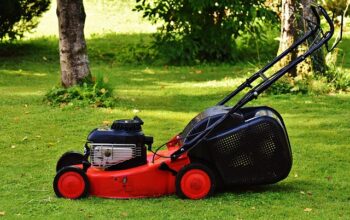Irrigating lawns effectively requires understanding grass types' water needs, climate, and sunlight. Cool-season grasses need deep, less frequent watering, while warm-season grasses demand shallow, more frequent hydration. Professional landscapers can tailor watering schedules. Irrigation systems include spray (even distribution but potential overspray), drip (targeted, eco-friendly), and sprinkler (comprehensive coverage, low fungal disease risk). Understanding these options helps homeowners foster lush landscapes through informed Lawn Care and Landscaping decisions.
- Understanding Your Lawn's Water Needs: A Foundation for Effective Irrigation
- Types of Irrigation Systems: Spray, Drip, and Sprinkler Options for Optimal Lawn Care
- Installation Process: From Planning to Activation for a Thriving Landscape
Understanding Your Lawn's Water Needs: A Foundation for Effective Irrigation

Irrigating your lawn effectively starts with understanding its unique water requirements. Lawns vary in their need for moisture based on factors like grass type, climate, and sunlight exposure. For instance, cool-season grasses like fescue thrive in cooler temperatures and require less frequent but deeper watering, while warm-season grasses such as Bermuda or Zoysia demand more frequent, shallow watering during hot months.
Knowing your lawn’s water needs allows you to set irrigation systems accordingly. This ensures optimal hydration without waste, promoting lush, healthy growth. Professional landscapers can assess your lawn and recommend tailored watering schedules, further enhancing your lawn care and landscaping efforts.
Types of Irrigation Systems: Spray, Drip, and Sprinkler Options for Optimal Lawn Care

When it comes to irrigation systems, there are three main types that offer optimal solutions for lawn care and landscaping: spray, drip, and sprinkler systems. Each option has its unique advantages tailored to different needs and preferences. Spray irrigation systems, for instance, use high-pressure nozzles to mist water over a large area, making them ideal for expansive landscapes where even coverage is essential. They’re efficient in cooling down hot regions during summer but can sometimes lead to overspray, causing water waste.
Drip irrigation, on the other hand, is a low-volume, precise watering method that delivers water directly to the plant roots. This type of system is perfect for small gardens and areas with specific watering needs. It conserves water effectively due to its localized application, making it an eco-friendly choice. Sprinkler systems, featuring overhead sprinklers, are commonly used in residential lawns. They provide thorough coverage while allowing for faster drying, reducing the risk of fungal diseases. With various options available, understanding these irrigation types helps homeowners make informed decisions to create lush, thriving landscapes.
Installation Process: From Planning to Activation for a Thriving Landscape

Irrigation system installation is a crucial step in achieving vibrant lawn care and landscaping. By understanding your lawn’s water needs and selecting the right type of irrigation system, you lay the foundation for a thriving landscape. The installation process, from planning to activation, ensures efficient watering, conserving resources, and promoting healthy growth. With the right approach, you’ll enjoy a lush, green oasis all year round.




